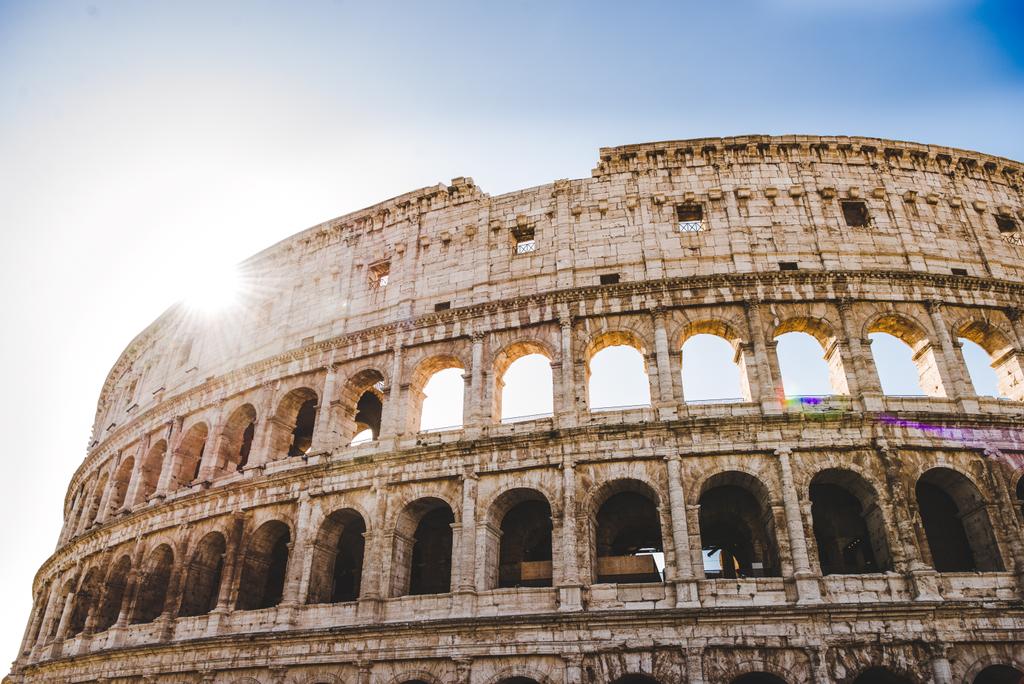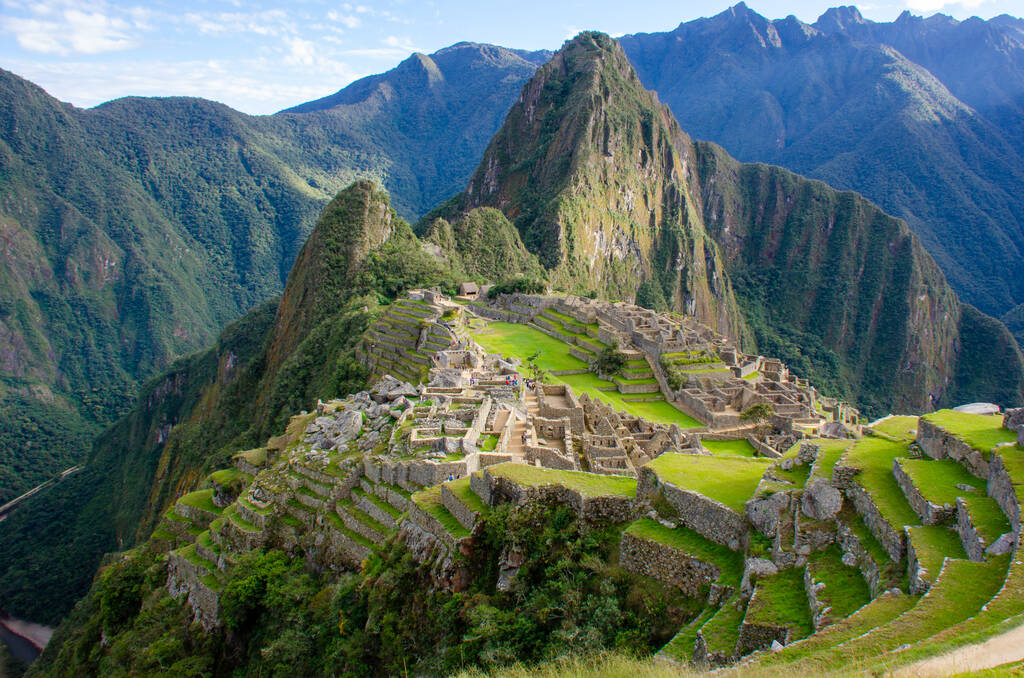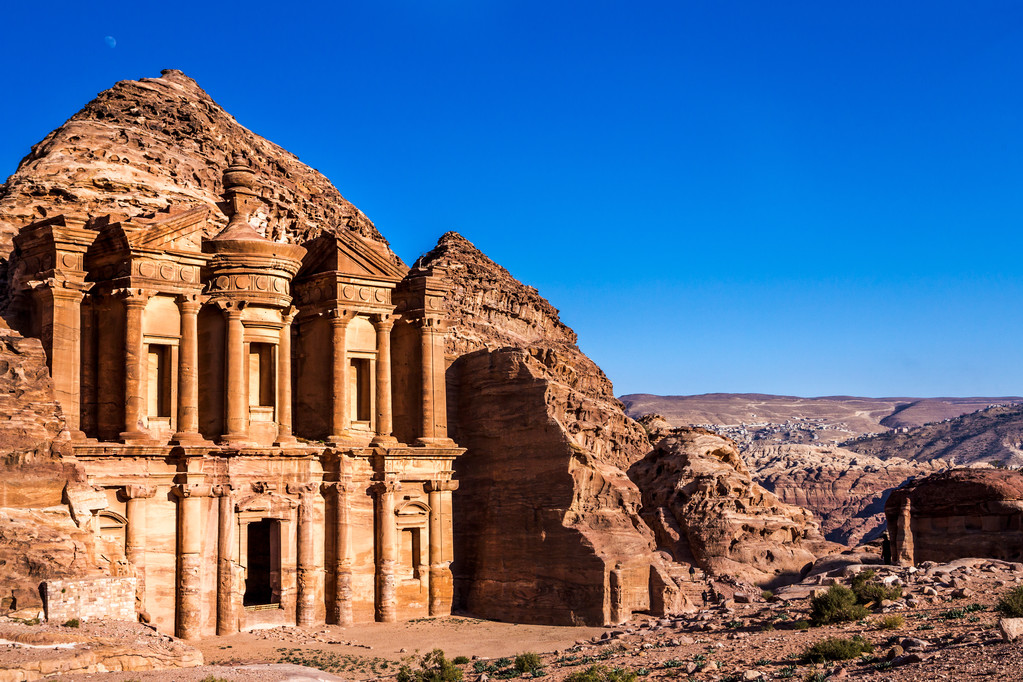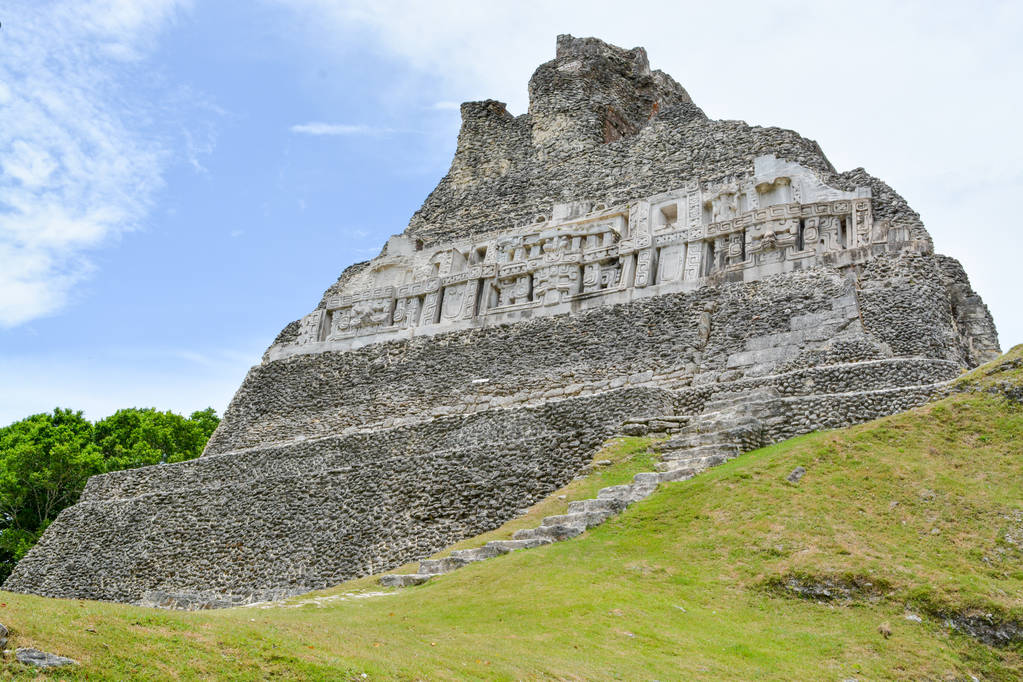Introduction
As we journey through the pages of time, the chronicles of human civilization reveal intricate tapestries of culture, art, science, and progress. Exploring these chapters of antiquity creates a remarkable journey, one that is filled with lessons, stories, and experiences that have shaped the world as we know it today.
The richness of the past has been beautifully carved and etched into the very fabrics of the earth, manifested in awe-inspiring structures and landmarks that have withstood the test of time.
These historical sites are more than just marvels of architecture and engineering; they serve as silent narrators, recounting the ebb and flow of humanity’s progress.
Immersing oneself in history can offer a unique experience, akin to stepping into a time machine, where the past unfolds in hues of grandeur and resilience.
These magnificent historical sites offer a glimpse into the lives of our ancestors, their struggles, their achievements; they are capsules that encapsulate the spirit of an era gone by.
They serve as a bridge to the past, allowing us to walk in the footsteps of those who came before us, to see the world through their eyes and to appreciate the roots from which our present reality has grown.
Travelling to and visiting these historical sites enriches our understanding of our shared human heritage. Each monument, each relic, each artifact is a testament to the resilience, ingenuity, and spirit of mankind.
They are physical embodiments of our collective history – a history that is filled with tales of courage, innovation, love, war, peace, and the indomitable spirit of human will. These sites offer a tangible connection to our past, blending education and exploration in a fascinating fusion of time travel.
A global tour of these historical sites elevates this experience to a whole new level. It presents a unique insight into the diversity, complexity, and interconnectedness of the human experience.
Every continent, every country, every city has a tale to tell, etched into its ancient ruins, towering monuments, and sacred shrines.
This journey transcends borders and time zones to reveal the shared narrative of humanity, unfolding a panoramic view of our collective past.
From the imposing walls of China to the imposing pyramids of Egypt, from the grandeur of the Colosseum in Rome to the enigmatic charm of Stonehenge in the UK, from the ancient city of Petra in Jordan to the iconic White House in the United States, a global tour of historic sites unveils a captivating symphony of stories.
It underlines the triumphs, tragedies, hopes, dreams, and aspirations that have shaped human civilization.
So, get ready to embark on an incredible voyage across the globe, unlocking the past and exploring the marvels of human history.
Let us weave through different cultures, epochs, and stories, appreciating the rich tapestry of our shared heritage and understanding the significance of preserving and cherishing these timeless treasures.
Join us in this grand tour, a journey through time and space, exploring the magnificent historic sites around the globe, the echoes of our past.
Asia

Asia, the largest continent on earth, is a land teeming with a rich and diverse history that has shaped the world as we know it today. Throughout its vast expanse, there are countless historical sites that offer unique insights into the lives and cultures of those who lived before us.
Among the numerous sites that deserve a place on your itinerary, let us embark on a journey that takes us from the Great Wall of China, the Taj Mahal in India, to the Horyu-ji Temple in Japan.
Arguably one of the most recognizable structures in the world, the Great Wall of China is a testament to China’s long and storied past. Spanning approximately 13,171 miles, this majestic man-made wonder is considered one of humanity’s most impressive architectural feats.
Walking on the Great Wall offers an unparalleled journey through China’s history, giving you a glimpse into the country’s tumultuous past involving invasions, wars, and dynastic changes.
The Wall, with its imposing fortresses and watchtowers, is a stark reminder of the country’s historical resolve to protect its people and sovereignty.
Venture farther south into the heart of India and you will find the Taj Mahal. This celebrated monument, a UNESCO World Heritage Site, is a symbol of eternal love and a remarkable example of Islamic architecture.
Built by Emperor Shah Jahan in memory of his beloved wife, Mumtaz Mahal, the Taj Mahal’s iconic white marble domes and intricate calligraphy are a sight to behold.
A visit to this magnificent mausoleum provides a deeper understanding of India’s Mughal history and an appreciation for the country’s intricate architectural craftsmanship.
Further east lies Japan, a country well-known for its harmonious blend of tradition and modernity. At the heart of its cultural heritage is the Horyu-ji Temple. Known as the Temple of the Flourishing Law, Horyu-ji is recognized as the world’s oldest surviving wooden structure.
It symbolizes Japan’s deep-rooted Buddhist traditions and the country’s continuous drive to preserve its ancient culture. From its five-story pagoda to the main hall adorned with statues, frescoes, and artifacts, the Horyu-ji Temple offers a wealth of history and a serene spiritual experience.
Each of these sites offers a different window into the past. The Great Wall reflects China’s martial history and the breadth of its ancient civilization.
The Taj Mahal embodies an emperor’s love and the architectural brilliance of the Mughal era. The Horyu-ji Temple represents Japan’s enduring cultural tradition and spiritual heritage.
Exploring these historical sites in Asia not only provides a glimpse into the past but also a profound understanding and appreciation of the cultural diversity that characterizes the human experience.
In the next section, we shall journey to a different part of the world, Europe, and explore its fascinating historical sites.
Europe

Immersing yourself in Europe’s rich antiquity provides an opportunity to understand the diverse cultures, traditions, and events that have shaped the modern world we live in today. The continent is a treasure trove of significant historic sites that tell tales of power, ambition, innovation, and creativity.
Whether it’s the awe-inspiring architecture of ancient Rome, the fairy-tale allure of a German castle, or the mysterious allure of a prehistoric monument in England, each site is a testament to the human spirit’s resilience and inventiveness.
Standing tall in the heart of Rome is the Colosseum, an amphitheater that once held up to 80,000 spectators.
Built almost two millennia ago during the reign of Emperor Vespasian, the Colosseum is a symbol of the Roman Empire’s grandeur, where gladiatorial contests, public spectacles, and theatrical performances entertained the masses.
Although partly ruined by damage caused by earthquakes and stone robbers, the Colosseum still stands as an iconic symbol of Imperial Rome, offering visitors a glimpse into the past where they can almost hear the roar of the crowd and the clash of swords.
Venturing further north into the picturesque landscapes of Bavaria, Germany, one cannot miss the enchanting Neuschwanstein Castle. With its tall towers, ornate interiors, and stunning panoramic views, this 19th-century palace is the epitome of a romantic fairy-tale castle.
Commissioned by Ludwig II of Bavaria as a retreat and homage to Richard Wagner, the German composer, Neuschwanstein embodies an idealized vision of a medieval knight’s castle, as imagined in the 19th century.
The castle’s breathtaking beauty, complemented by its surrounding natural splendor, has made it one of the most visited tourist attractions in Europe.
Turning our historical compass to England, we encounter the ancient and enigmatic Stonehenge. This prehistoric monument, estimated to have been constructed between 3000 to 2000 BC, is a marvel of human engineering.
The iconic stone circle continues to mystify historians and archaeologists, sparking debate and speculation about its original purpose.
Whether it was a place of healing, a temple for sun worship, or a sacred burial ground, visiting Stonehenge is an awe-inspiring experience, transporting you back to a time when ancient cultures sought to understand and connect with the cosmos.
Europe is indeed a gateway to a captivating past, offering a unique blend of history, culture, and architectural marvels. Each historic site is a tangible reminder of our collective human heritage.
They serve as powerful links to a past that has shaped our present, encouraging us to respect and preserve these symbols of human achievement for future generations.
As we continue our journey through the ages, exploring these historic sites in Europe, we gain a deeper understanding of the diverse tapestry of human history. These monuments, each with their unique stories and significance, reinforce the importance of preserving our shared cultural heritage.
Through exploring the rich histories of these sites, we can gain a profound appreciation of the civilizations that shaped them, fostering a greater understanding of our shared human experience.
North America

The vast expanse of North America is home to a myriad of historic sites, each one a monument to the rich tapestry of human existence that has spanned the continent over thousands of years.
From the intricate architectural wonders crafted by the hands of political leaders to the awe-inspiring natural formations sculpted by the forces of nature, North America offers a unique blend of man-made and natural historic sites that are sure to captivate any history enthusiast.
Firstly, we have the White House, one of the world’s most iconic buildings and a symbol of the United States’ political power. Located in the nation’s capital, Washington D.C., the White House has been the official residence of the President since John Adams took office in 1800.
It has stood witness to the turbulence and triumphs of American history – from the drafting of groundbreaking policies to the solemn declarations of war.
A tour of this historic site offers visitors a unique glimpse into the heart of American politics and a chance to appreciate the architecture of James Hoban, who designed the building after winning a national competition.
Moving from man-made structures to natural wonders, we then come to the Grand Canyon. Stretching over 277 miles through the arid landscapes of Arizona, the Grand Canyon is a testament to the formidable power of nature.
Carved by the Colorado River over millions of years, its rust-hued cliffs and rugged terrains tell a geological story that dates back to the Precambrian era.
For those who adore nature and history, exploring the canyon’s meandering paths and gaping chasms is a truly enriching experience, offering insights into the long and complex history of our planet.
Venturing further south, we encounter Chichen Itza, an ancient Mayan city in the heart of Mexico’s Yucatan Peninsula.
This spectacular archaeological site, dotted with imposing pyramids, ornate temples, and sacred cenotes, offers a fascinating insight into the Mayan civilization that thrived here over a thousand years ago.
The centerpiece is the Kukulkan Pyramid, a towering structure that stands as a testament to the Mayans’ remarkable architectural and astronomical prowess. A visit to Chichen Itza is akin to stepping back in time, allowing one to marvel at the achievements of a civilization that existed long before ours.
North America’s historic sites are as diverse as they are extraordinary, offering a unique blend of cultural, natural, and architectural history.
Whether it’s witnessing the ebb and flow of power at the White House, marveling at the geological story etched into the walls of the Grand Canyon, or exploring the ancient ruins of a once mighty civilization at Chichen Itza, each experience is unique, yet all are part of the rich tapestry of human history that makes North America so captivating.
In conclusion, these historic sites in North America serve as a compelling reminder of the transience of human life and the enduring power of nature. They provide a unique vantage point from which to view the past, and in doing so, they enhance our understanding of the present and our place in the world.
Therefore, exploring these historic sites isn’t just a journey through time; it’s an exploration of the human experience in all its complexity and beauty.
South America

South America, a continent replete with history and splendor, hosts an array of historic sites that are not only visually stunning but also echo stories from the past. This wonder-filled continent manifests the perfect blend of nature and human effort, with sites that transcend time.
Our first stop is Machu Picchu, the ancient Inca city nestled high in the Andes Mountains of Peru. Often referred to as the “Lost City of the Incas”, Machu Picchu is an extraordinary testament to the sophistication of Inca engineering.
The sprawling terraces, intricate stone constructions, and the panoramic blend of cloud-capped mountains and deep, green valleys, make it a sight to behold. Walking through its ancient paths, one can’t help but feel a deep sense of respect for the Incas’ ability to build such a city in a seemingly impossible location.
Next, we journey to the bustling city of Rio de Janeiro in Brazil, home to the iconic statue of Christ the Redeemer. Towering over the city with open arms, the statue stands as a symbol of peace and inclusivity.
The panoramic view of the city, with its stunning beaches and vibrant neighborhoods from the top, is simply awe-inspiring. The Christ the Redeemer isn’t just an artistic marvel—it’s also an emblem of the deep-rooted spirituality that permeates through Brazilian culture.
Our South American exploration wouldn’t be complete without a visit to the Galapagos Islands, a part of Ecuador and a UNESCO World Heritage Site. While not man-made, these islands host a wealth of natural history.
They serve as the living museum of evolution and are primarily known for their unique wildlife, much of which can’t be found anywhere else on Earth. Most famously, it was the observations of these unique species that led Charles Darwin to develop his Theory of Evolution.
From the rugged ruins of Machu Picchu to the towering Christ the Redeemer and the wildlife-rich Galapagos Islands, South America’s historic sites offer a remarkable and varied insight into human civilization and the natural world that have co-existed for centuries.
Each site tells its own story, offering a glimpse into the lives and cultures of the people who once inhabited these places.
Visiting these historic sites, one can partake in the shared human history that transcends borders and time. The deep sense of history, the rich tapestry of diverse cultures, and the indomitable spirit of nature make South America a must-visit destination for any global tour of historic sites.
Africa

Africa, often referred to as the cradle of mankind, holds within its vast expanses some of the most awe-inspiring historic sites in the world. Each site narrates a tale of ancient civilizations, their ingenuity, and their impact on shaping our world today.
Visiting these sites elicits a profound sense of deep connection with our past, opening our eyes to the richness and diversity of human life and culture.
The Great Pyramids of Egypt, one of the Seven Wonders of the Ancient World, stands majestically on the Giza Plateau. Constructed around 4,500 years ago, these grand structures were built as tombs for the mighty Pharaohs and their consorts.
The engineering prowess and architectural precision displayed in their construction leave visitors awestruck and fascinated. The enigmatic Sphinx nearby, with its lion’s body and a human head, stands as a silent sentinel, adding to the mystery and allure of this ancient site.
Next on our African tour, we move to the southeastern tip of Europe to Athens, home to the magnificent Acropolis. Overlooking the city of Athens, the Acropolis is an ancient citadel containing the remnants of several historical buildings, the most famous among them being the Parthenon.
A symbol of ancient Greece, the site provides a glimpse into the glorious Greek civilization and their profound influence on art, architecture, and democracy.
Journeying westwards, one arrives at the ancient city of Timbuktu in Mali. Once a bustling hub of Islamic culture and learning during the medieval period, Timbuktu is home to impressive mud-brick structures like the Sankore Madrasah, Djinguereber Mosque, and the Sidi Yahya Mosque.
Despite the ravages of time and conflict, the city retains its historical charm and stands as a testament to Africa’s rich intellectual and cultural heritage.
Africa, in all its vastness and historic grandeur, provides a unique window into our shared past. From the mysterious pyramids of Egypt to the intellectual hub of Timbuktu, each site imparts a unique story, a piece of the intricate mosaic that is human history.
As one navigates through these historic sites, there is an undeniable sense of stepping back in time, of touching the threads that weave together the tapestry of human civilization.
Visiting these historic sites in Africa not only illuminates the grand scale of human achievement but also fosters a deeper understanding and appreciation of the diverse cultures and histories that have shaped our world.
In the echoes of these ancient stones, one can hear the heartbeat of humanity, resonating across millennia, reminding us of our shared history, our triumphs, and our resilience.
Africa’s historic sites stand as a poignant reminder of our journey as a species, urging us to cherish and protect these precious links to our past.
Middle East

The Middle East, a region steeped in history and the cradle of ancient civilizations, offers a plethora of awe-inspiring historic sites. The region presents a unique blend of architectural marvels and significant religious and cultural landmarks.
The complex tapestry of history that envelops the Middle East is unrivaled, making it a sought-after destination for history enthusiasts and globetrotters.
Our first stop in this region is the ancient city of Petra in Jordan. Petra, known as the ‘Rose City’ due to the color of the rock it was carved from, is an archaeological wonder built by the Nabateans around 300 B.C.
This stunning site, with its elaborate tombs, temples, and a 4,000-seat amphitheater carved directly into the rose-red sandstone cliff faces, offers a glimpse into the ingenuity of an ancient civilization.
Walking through the narrow, winding chasm known as the Siq to emerge into the view of Al-Khazneh, the treasury, is an unforgettable experience.
Moving westwards, we reach Spain’s southern coastline to visit the Alhambra. Although not geographically located in the Middle East, the Alhambra is a testament to the region’s vast influence during the Moorish rule in Spain.
This stunning palace and fortress complex, with its intricate arabesque interiors, serene courtyards, and lush gardens, stands as a symbol of the harmonious blend of Islamic and Western architectural styles.
The Alhambra, with its enchanting play of light and shadow, whispers tales of a bygone era of prosperity and refinement.
Finally, our historic tour of the Middle East brings us to Jerusalem’s Temple Mount, one of the most contested and significant religious sites in the world. Home to the Dome of the Rock and the Al-Aqsa Mosque, it is a place of immense significance for Jews, Christians, and Muslims alike.
For Jews, it is the holiest site, being the location of the ancient First and Second Temples. For Muslims, the Dome of the Rock is the third holiest site after Mecca and Medina. The Temple Mount, with its golden dome and white marble shining against the Jerusalem sky, is a sight to behold.
The Middle East, with its diverse historical sites, offers an enticing journey into the annals of human civilization. Each site, with its unique history, architectural brilliance, and cultural significance, paints a vivid picture of the region’s past and the people who shaped it.
Whether it is the rock-carved city of Petra exhibiting the grandeur of the Nabateans, the harmonious blend of cultures in the Alhambra, or the religious significance of the Temple Mount, the Middle East is a region that invites us to delve deeper into our shared history and experience the intertwining threads of humanity’s story.
Conclusion
Embarking on a global tour of historic sites can be one of the most enlightening endeavors one can undertake, offering a unique and varied experience like no other.
The journey across continents, from the robust and time-tested Great Wall of China to the architectural splendor of Neuschwanstein Castle in Germany, exposes one to the diverse cultures and histories that make up the rich tapestry of our collective human experience.
Each site tells a story, a narrative of human triumph, resilience, creativity, and innovation, reminding us of the heights we can reach when our potential is fully realized.
Through these visits, we get a glimpse into the lives of the people who came before us, understanding their struggles, celebrating their achievements, and appreciating their artistic and architectural ingenuity.
For example, the iconic White House symbolizes the political history and power of one of the world’s superpowers, while the Grand Canyon offers a breathtaking testament to the sheer power and beauty of nature.
Each site, in its unique way, contributes to the broader understanding of our shared human history and the progress we have made over the centuries.
Moreover, the diverse range of historic sites around the globe allows for a captivating look into the human experience across various epochs.
For instance, the mystery and intrigue surrounding the ancient city of Petra in the Middle East, or the preserved grandeur of the Acropolis of Athens, provide us with a fascinating insight into the civilizations that shaped the world as we know it today. These sites serve as tangible reminders of our past, providing context for our present and inspiration for our future.
Yet, the importance of visiting and appreciating these historic sites extends beyond their educational value. Each site is a testament to the indomitable spirit of man, exemplifying how societies can rise, create, innovate, and leave behind legacies that withstand the test of time. They represent our shared heritage and underline the interconnectedness of our global community.
In conclusion, a global tour of historic sites is not merely a journey through different locations; it is a voyage through time, a deep dive into the annals of human history, culture, and civilization.
It’s an experience that broadens perspectives, enriches understanding, and fosters respect for the different cultures that make up the beautiful mosaic of humanity.
It is an adventure that every history buff, culture enthusiast, or curious traveler should undertake, as it promises to be as enlightening as it is unforgettable.

